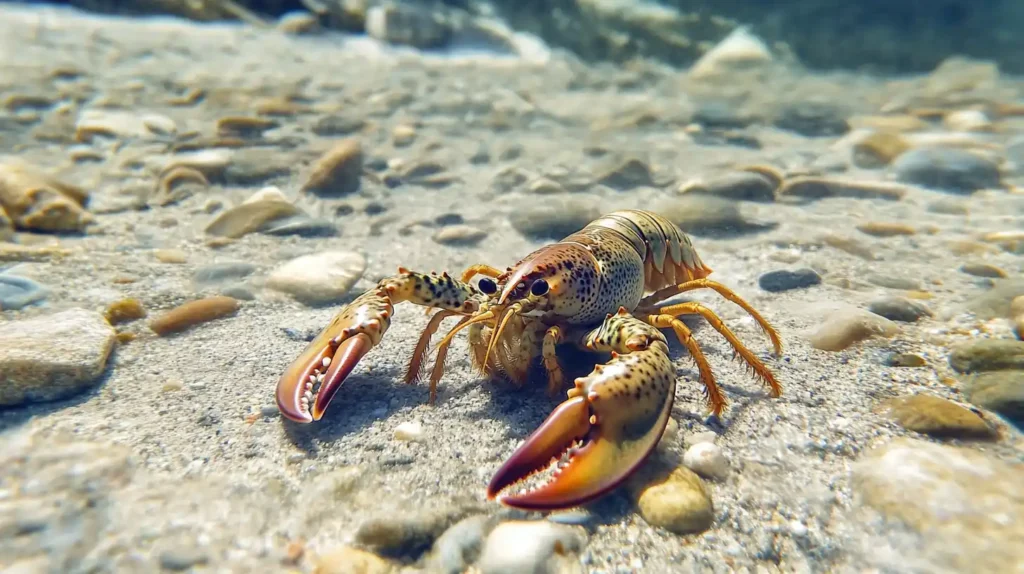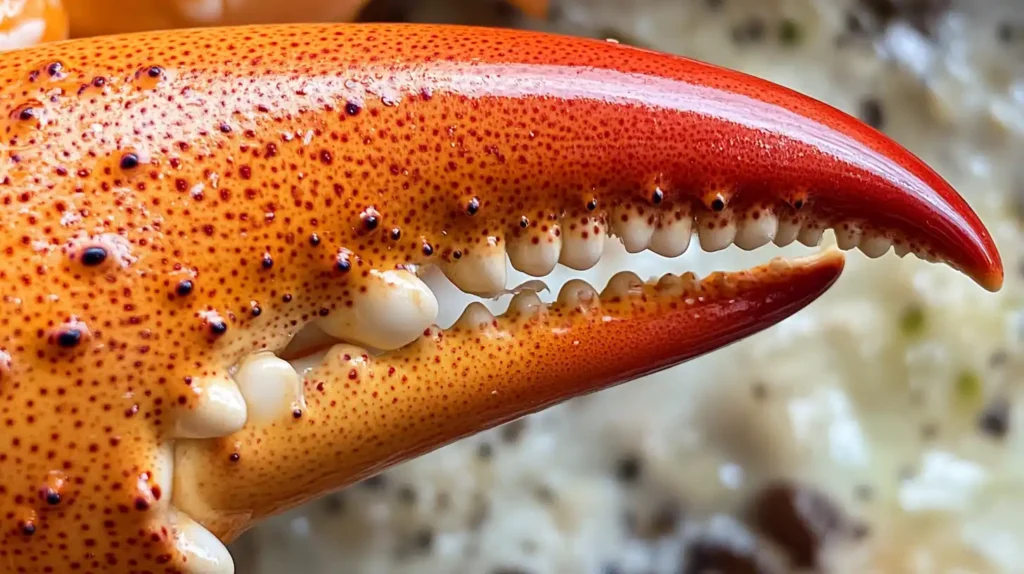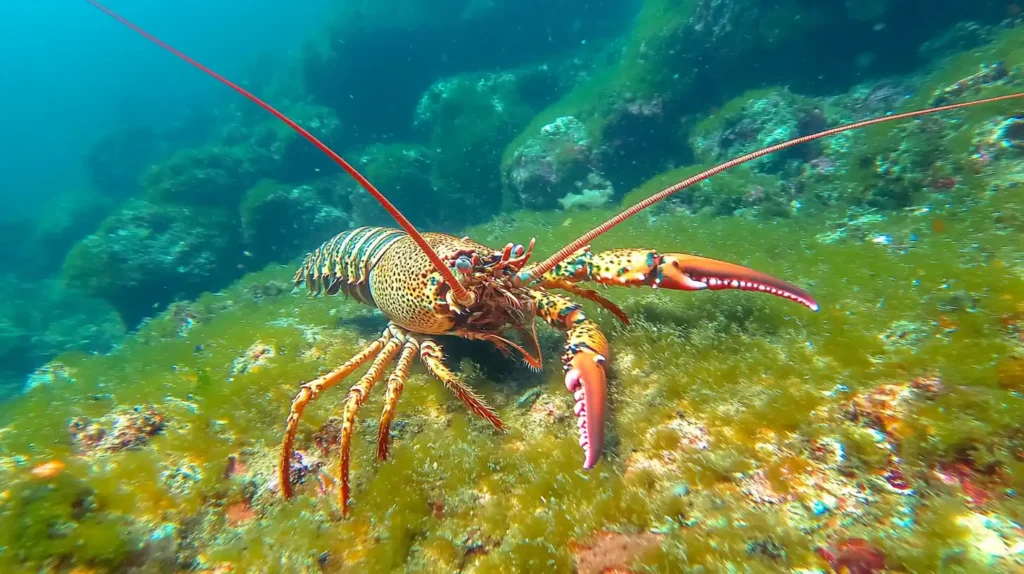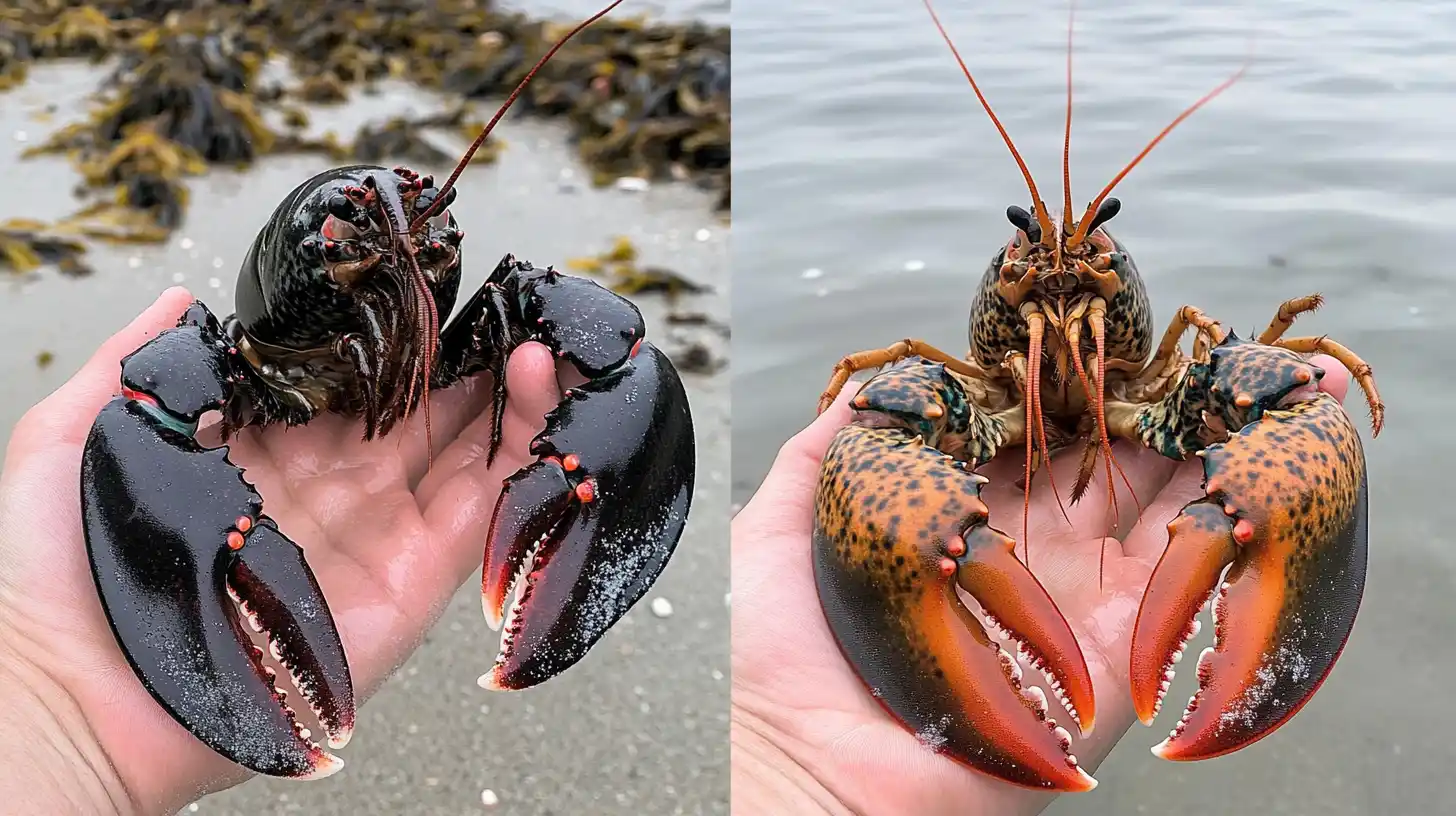Lobsters are fascinating marine creatures, but many people wonder: do lobsters have claws or pinchers? The answer depends on the species. Some lobsters, like the American lobster, have large, powerful claws, while others, like the spiny lobster, do not have claws at all. Instead, they rely on speed, spines, and camouflage to survive.
If you’ve ever asked, “do lobsters have claws or pinchers?”, you’re not alone. Many people assume all lobsters have claws, but that’s not the case! Some species rely on antennae, body armor, and fast swimming instead of claws. If you’re curious about the structure and function of lobster claws, you might also find this detailed guide on lobster claw anatomy helpful.
Let’s dive deeper into the different types of lobsters, their claws and pinchers, and why some species evolved without them.

Do All Lobsters Have Claws?
Do lobsters have claws or pinchers? Not all lobsters have claws! Lobsters are divided into two main groups:
- Clawed lobsters (Nephropidae) – These have two large claws, each with a different function.
- Clawless lobsters (Palinuridae, Scyllaridae, and Synaxidae) – These have no claws but use other survival methods.
- Clawed lobsters (Nephropidae) – These have two large claws, each with a different purpose.
- Clawless lobsters (Palinuridae, Scyllaridae, and Synaxidae) – These have no claws but use other ways to defend themselves.
The most well-known clawed lobster is the American lobster (Homarus americanus). It is found in cold waters, especially near North America’s Atlantic coast. This species has two different claws:
- The Crusher Claw – Larger and stronger, used to break shells of prey.
- The Pincher Claw – Smaller and sharper, used for cutting and grabbing food.
Meanwhile, spiny lobsters (also called rock lobsters) do not have claws. Instead, they have long antennae and sharp spines for protection. These lobsters live in warmer waters such as the Caribbean, Australia, and Southeast Asia.
Other clawless lobsters include:
- Slipper lobsters – They have flat, broad bodies that help them hide in the sand.
- Furry lobsters – They are rare and covered in tiny hair-like bristles for protection.
Lobster Claw Anatomy: Claws vs. Pinchers
If you’ve ever asked, “do lobsters have claws or pinchers?”, the answer lies in their unique anatomy. Lobsters with claws have two distinct types, each designed for a specific function:
- Crusher Claw – This large, thick claw is stronger and heavier, used to crush shells of prey like crabs and clams.
- Pincher Claw – This smaller, sharper claw is used for cutting and grabbing softer prey like worms or fish.
Lobster claws are not only powerful but also a sought-after delicacy. If you’re wondering whether lobster claws are good to eat, check out this detailed breakdown on lobster claw taste and preparation.

Are Lobsters Right-Clawed or Left-Clawed?
Just like humans, lobsters can be right-handed or left-handed! The side where the pincher claw develops decides whether the lobster is right- or left-clawed. Surprisingly, most lobsters are right-clawed, just like most people are right-handed.
How Strong Are Lobster Claws?
Lobster claws are very powerful. A large American lobster can exert up to 100 pounds of pressure per square inch with its crusher claw! This is strong enough to break shells and even cause pain if it pinches a human hand.
Lobsters Without Claws: How Do They Survive?
Many people assume all lobsters have claws, but that’s not true. Do lobsters have claws or pinchers? The answer is not always. Instead of crusher and pincher claws, clawless lobsters use other survival methods.
1. Spiny Lobsters – Sharp Spines for Protection
Spiny lobsters, also called rock lobsters, have hard shells covered in sharp spines. These spines make it difficult for predators to eat them. Instead of claws, spiny lobsters have long, strong antennae, which they use to sense danger and fight off threats.
If a predator gets too close, a spiny lobster whips its antennae aggressively. This can scare away attackers.

2. Slipper Lobsters – The Masters of Camouflage
Slipper lobsters have flat, broad bodies that help them hide in sand and rocks. Unlike spiny lobsters, they do not have long antennae. Instead, they rely on their natural camouflage to avoid predators.
Because they blend in so well, slipper lobsters are hard to spot. This makes them less likely to be eaten.
3. Furry Lobsters – Tiny Hairs for Defense
Furry lobsters are rare, but they have a unique defense strategy. Their bodies are covered in tiny, hair-like bristles. These bristles make them look bigger and help them blend into coral reefs.
Because of their strange appearance, predators may mistake them for something inedible and move on.
How Do Clawless Lobsters Catch Food?
Since they don’t have claws, clawless lobsters rely on speed and strong mouthparts to eat. Their powerful legs and mandibles (jaw-like structures) help them tear apart food.
Can Lobsters Regrow Their Claws?
Lobsters are amazing creatures because they can regrow lost claws! If a lobster loses a claw in a fight or to escape a predator, it does not lose it forever. Over time, the lost limb slowly grows back.
1. Why Do Lobsters Lose Their Claws?
Lobsters lose claws for different reasons, including:
- Fights with other lobsters – Lobsters fight over food, territory, and mates. Sometimes, a claw gets torn off.
- Escaping predators – If a lobster is caught, it may drop a claw to distract the predator and swim away.
- Accidents – Lobsters live on rocky ocean floors, where claws can get stuck or damaged.
2. How Do Lobsters Regrow Their Claws?
- The process is called regeneration, meaning the body slowly rebuilds the missing part.
- Regrowing a claw can take several years because lobsters grow slowly.
- When a lobster molts (sheds its old shell), the new claw starts to form.
- The first regrown claw is usually small and soft. Over time, it becomes larger and stronger.
3. Can a Lobster Survive Without Claws?
Yes, but it is harder for them to catch food and defend themselves. A lobster without claws must rely on its legs, mandibles (mouthparts), and speed to survive.
4. What Else Can Lobsters Regrow?
Lobsters can also regrow other body parts, including:
- Legs
- Antennae
- Even their eyes in some cases!
Why Do Lobsters Have Two Different Claws?
Lobsters with claws don’t have two identical ones. Instead, they have one large, heavy crusher claw and one smaller, sharper pincher claw. But why?
1. The Crusher Claw – Built for Strength
- This claw is larger, stronger, and heavier.
- It has a thick, rough surface inside that helps break hard shells of prey like crabs and clams.
- Lobsters use this claw to crush and hold onto their food.
2. The Pincher Claw – Built for Speed
- This claw is smaller, thinner, and faster.
- It has sharp, pointed edges that help cut and grip softer prey like fish or worms.
- Lobsters use this claw to tear apart food and defend themselves.
3. Lobsters Can Be Right-Clawed or Left-Clawed
Just like humans can be right-handed or left-handed, lobsters can be right-clawed or left-clawed. The crusher claw develops on one side, and the pincher claw on the other.
Most lobsters are right-clawed, meaning their crusher claw is on the right side. However, some lobsters develop their crusher claw on the left, making them left-clawed.
4. Lobsters Are Not Born With Different Claws
Baby lobsters start with two identical claws. Over time, one claw becomes thicker and stronger, turning into the crusher claw. The other claw stays slimmer and sharper, becoming the pincher claw.
Where Do Clawed Lobsters Live?
Lobsters with claws are usually found in cold waters, where they thrive on rocky, sandy, or muddy ocean floors. They prefer deep-sea environments with plenty of hiding spots.
1. The American Lobster – The King of Clawed Lobsters
The American lobster (Homarus americanus) is the largest and strongest of all clawed lobsters. It is found along the North Atlantic coast of North America, especially in places like:
- Maine, USA
- Canada’s East Coast
- New Jersey, USA
These lobsters prefer cold, deep waters and hide in rocky crevices to avoid predators. Their large claws help them catch prey and fight off enemies.
2. The European Lobster – The Atlantic’s Blue Beauty
The European lobster (Homarus gammarus) is similar to the American lobster but lives in the eastern Atlantic Ocean. It is commonly found in:
- The United Kingdom
- France and Spain
- Norway and Sweden
Unlike the brownish American lobster, the European lobster has a dark blue shell. Its claws are just as strong and help it survive in rough waters.
3. The Norway Lobster – A Delicate Clawed Species
The Norway lobster (Nephrops norvegicus), also called langoustine, is a smaller lobster species with thinner claws. It is found in:
- The North Sea
- The Mediterranean Sea
- The waters around Iceland
Unlike American and European lobsters, Norway lobsters have slender, delicate claws. They use them to catch small fish and crustaceans rather than crushing shells.
4. Why Do Clawed Lobsters Prefer Cold Waters?
Clawed lobsters thrive in cold water because:
- Cold temperatures slow down their metabolism, allowing them to live longer.
- Cold water contains more oxygen, helping them breathe better.
- They are less active, which means they grow slowly but live longer.
Lobsters Without Claws – How Do They Survive?
Not all lobsters have claws, but that doesn’t mean they are defenseless. Instead of crusher and pincher claws, these lobsters use other survival methods.
Spiny Lobsters – Sharp Spines for Protection
Spiny lobsters, also called rock lobsters, have hard shells covered in sharp spines. These spines make it difficult for predators to eat them. Instead of claws, spiny lobsters have long, strong antennae, which they use to sense danger and fight off threats.
Slipper Lobsters – The Masters of Camouflage
Slipper lobsters have flat, broad bodies that help them hide in sand and rocks. Unlike spiny lobsters, they do not have long antennae. Instead, they rely on their natural camouflage to avoid predators.
Furry Lobsters – Tiny Hairs for Defense
Furry lobsters are rare, but they have a unique defense strategy. Their bodies are covered in tiny, hair-like bristles. These bristles make them look bigger and help them blend into coral reefs.
For a complete look at how different seafood items are used in cooking, take a look at this seafood mix guide.
Common Questions About Lobster Claws (FAQs)
People often have many questions about lobster claws. Here are some of the most common ones!
1. Can a Lobster Live Without Claws?
Yes! A lobster that loses both claws can still survive. However, it becomes more vulnerable to predators and has a harder time catching food. It must rely on its legs, mandibles (mouthparts), and speed to survive.
2. Can Lobsters Break Human Bones with Their Claws?
Not exactly, but a large American lobster can deliver a very painful pinch. A big lobster’s crusher claw can exert up to 100 pounds of pressure per square inch. This is strong enough to bruise the skin, cut through soft tissue, and cause serious pain.
3. Do Lobster Claws Grow Bigger Over Time?
Yes! As lobsters age, their claws keep growing. Older lobsters have much larger and stronger claws than younger ones. Some very old lobsters have claws so big they look out of proportion to their bodies!
4. Are Spiny Lobsters and Rock Lobsters the Same?
Yes! The spiny lobster is also called the rock lobster. These lobsters do not have claws. Instead, they have long antennae and spiny shells to protect themselves from predators.
5. Why Do Restaurant Lobsters Have Rubber Bands on Their Claws?
Lobsters in tanks or restaurants often have rubber bands around their claws. This is done for safety reasons because:
- Lobsters can fight each other in the tank.
- A lobster can pinch and injure a handler.
- Their claws are strong enough to cause damage if left unbanded.
6. Are Lobsters Right-Handed or Left-Handed?
Lobsters can be right-clawed or left-clawed, just like humans! Most lobsters are right-clawed, meaning their crusher claw is on the right side. However, some lobsters develop their crusher claw on the left and are considered left-clawed.
Final Thoughts: Clawed vs. Clawless Lobsters
So, do lobsters have claws or pinchers? The answer depends on the species. Some lobsters, like the American lobster, have large, powerful claws that help them catch food, fight, and defend themselves. Others, like the spiny lobster, do not have claws and instead rely on speed, spines, and camouflage for survival.
Clawed Lobsters – Strong and Powerful
- American lobsters, European lobsters, and Norway lobsters have large claws.
- They use their crusher claw to break shells and their pincher claw to tear food apart.
- Their claws grow larger with age, making them even stronger.
- They prefer cold waters, where they grow slowly and live longer.
Clawless Lobsters – Fast and Smart
- Spiny lobsters, slipper lobsters, and furry lobsters do not have claws.
- They use sharp spines, strong legs, and long antennae to protect themselves.
- Many are fast swimmers and can escape predators easily.
- They live in warm waters, often in coral reefs and rocky crevices.
Next time you see a lobster, look closely! You might be able to tell if it is clawed or clawless just by its appearance. Whether they use claws to crush prey or long antennae to sense danger, lobsters are incredible survivors that have evolved in unique ways.
Key Takeaways:
Clawed lobsters rely on crusher and pincher claws for survival.
Clawless lobsters use spines, speed, and camouflage instead.
Lobsters can be left-clawed or right-clawed, similar to humans.
Some lobsters regrow lost claws after a fight or injury.
The American lobster has the largest and strongest claws of all species.

